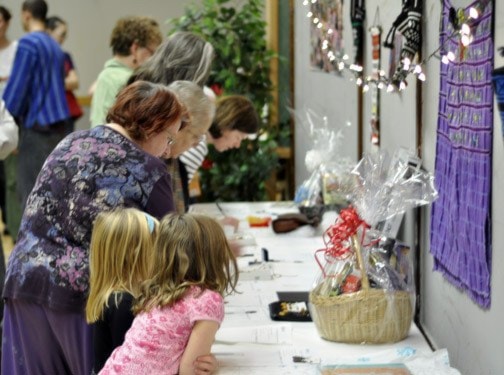Last Friday, people packed into the Rossland Secondary School gym to get a dish of rice and beans.
The event was a fundraiser for a group of 14 Selkirk College nursing students who will be heading down to Guatemala in May.
The dinner featured the Guatemalan staples, as well as a raffle and silent auction, with all proceeds going to the trip.
Mary Ann Morris, the nursing instructor who has co-ordinated a few of the trips, said the trip helps to give students a different perspective on health care.
Morris said on the past trips she has a deeper awareness about privilege and issues around impoverishment, as well as housing and potable water.
“That’s the broader context that we work in,” Morris explained. “Often, people assume when you’re heading to countries like Guatemala that you’re giving direct care, but our experience is that folks down there can do that very capably and have a much better understanding of their own patients than we do.”
She said that, really, they go to learn from them. This like how to provide care in a low resource context, which she says is likely increasingly what nurses are facing in Canada, with regards to privatization of healthcare.
She says that in countries such as Guatemala, they do with what they have and move from a model of expert care to a much more community based model.
“Often, what we find is that it’s social isolation and lack of access to a community that really deepens the pain and suffering that a patient experiences when they have to deal with a health crisis,” she said. “So if you can mobilize the community and really recognize the capacity of community members to respond, you’re way ahead of the game.”
In Guatemala they work with grassroots organizations that are mobilizing youth and women and elders to help out in the communities.
“It’s a really exciting model of health care.,” she said. “It’s a model of health care that supposedly Canada agreed to way back in 1978 with the document of primary health care that was set globally. We had a hard time picking it up because I think initially people presumed it was a model that was needed by “poor countries” but not wealthy countries like ours.”
She said there will be an increasing shift of focus from illness care to health care and more of a focus on people’s health and ways to support people to be as healthy as they can.
They put resources as required downstream to support people when they are really ill.
“It can make a huge difference, certainly from an economic perspective,” she said. “It’s way more cost effective to keep people as healthy as they possibly can then to treat people once they’re already ill.”
She said it also helps with people’s sense of who they are and what their capacity are and people’s ability to work together and support each other. “Communities that are strong tend to do much better than communities where people are very oriented to just their own survival and meeting their own needs,” she said.
So far, 47 students have made the trip, and despite the assumption that those who do a trip like this want to eventually work overseas, only one has gone to work outside of Canada.
“It’s really about bringing back those skills and that broader world view and working right here,” she said.
Out of the other former students, many work locally, with a few down at the Coast or up North.
For the students and others in the Kootenays it is a way of connecting with “the broader world picture that we hear about in the news that we sometimes feel a little bit detached from or powerless to make any change or difference,” she added.
